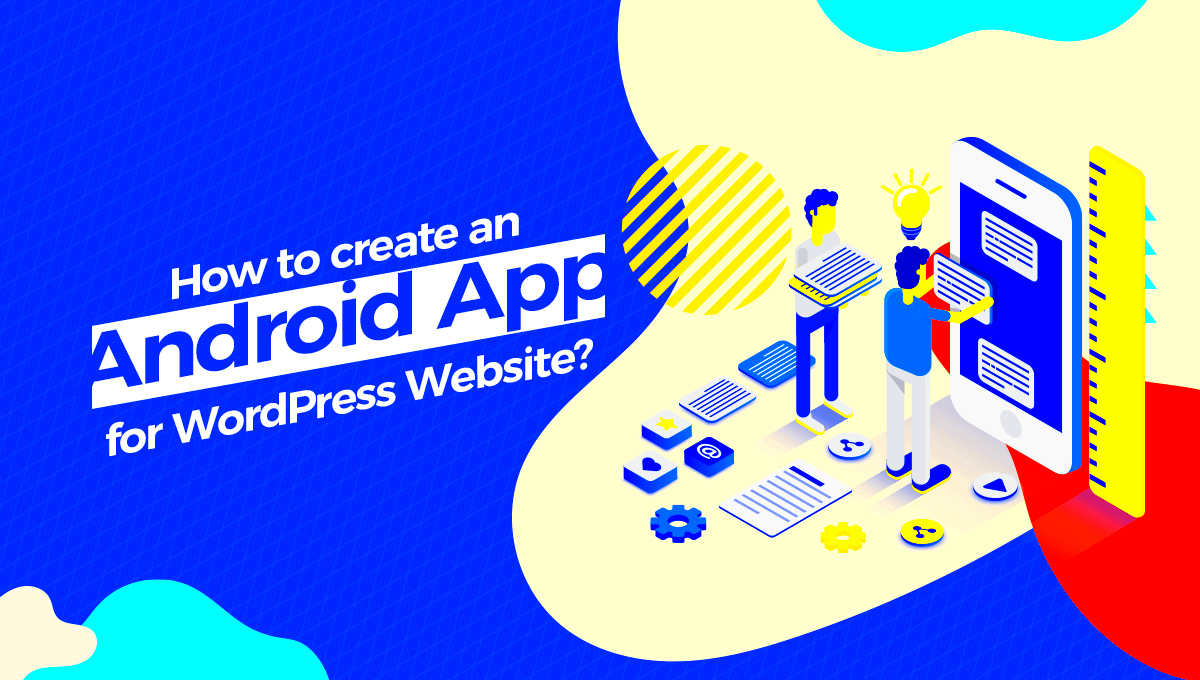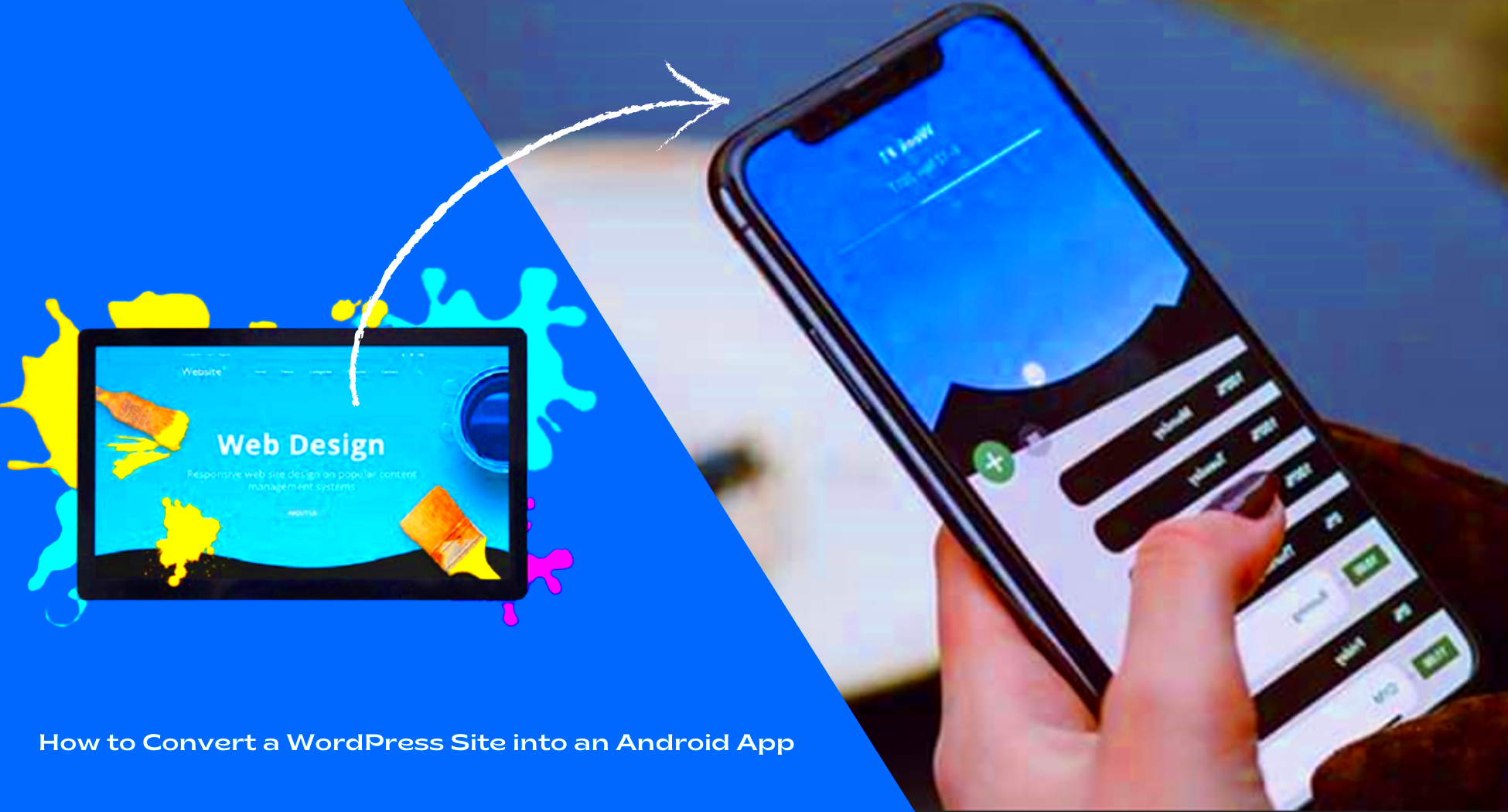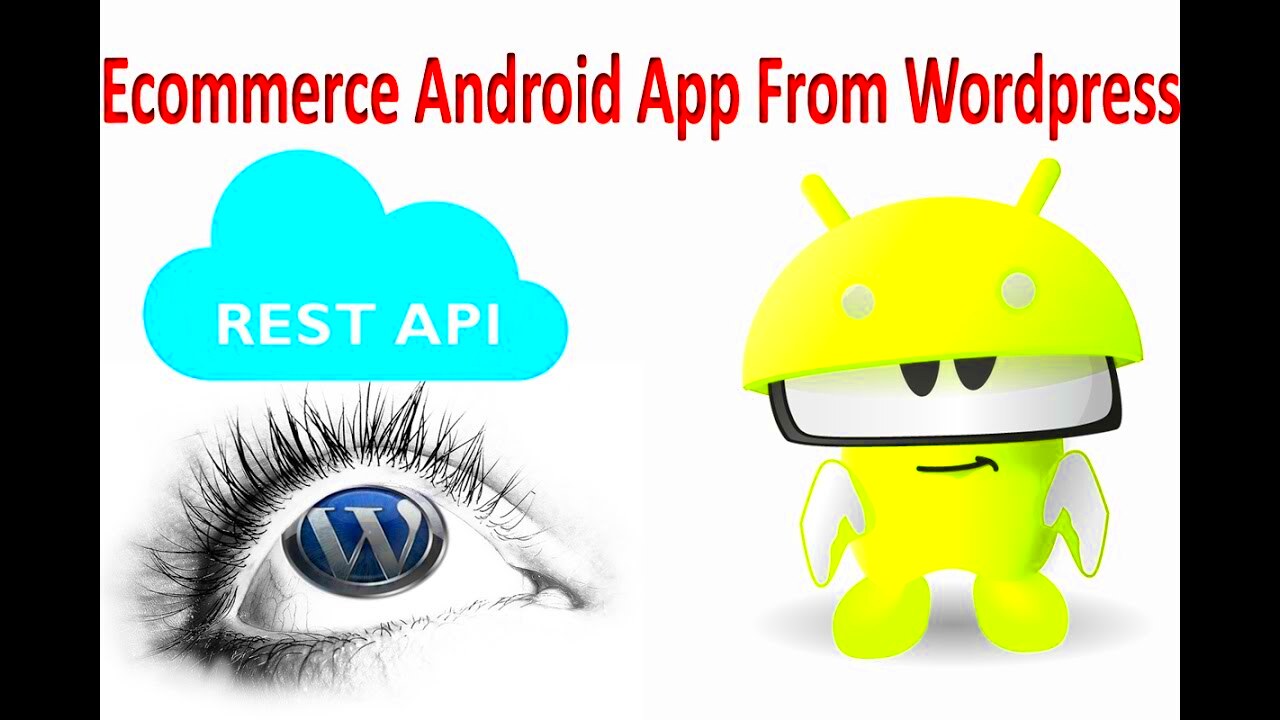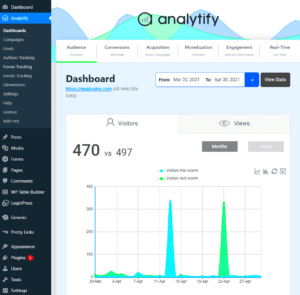Are you a WordPress site owner wondering if you can turn your website into an Android app? You’re not alone! Many bloggers, businesses, and entrepreneurs are looking for ways to extend their online presence into mobile applications. With the growing reliance on smartphones, having a dedicated app can enhance user engagement, improve accessibility, and boost your brand. In this post, we’ll dig into the possibilities and benefits of creating an Android app from your WordPress site.
Understanding the Need for an Android App

So, why should you consider developing an Android app for your WordPress site? Let’s break it down!
- Enhance User Experience: Mobile apps provide a smoother and quicker user experience compared to websites. You can create a tailored environment that meets your users’ needs.
- Push Notifications: An app enables you to send real-time updates directly to users via push notifications, keeping your audience informed about new content or promotions.
- Offline Access: Unlike a website, users can access app content without an internet connection, providing them with a seamless experience.
- Brand Visibility: Having an app allows your brand to stay on users’ devices. This means your logo is literally in their hands, making them more likely to return.
- Increased Engagement: Apps encourage users to interact more frequently than a website. The easy-to-navigate interface typically leads to heightened user engagement.
In the digital age, where mobile use is paramount, translating your WordPress site into an app isn’t just a luxury—it’s a necessity. Taking this step can lead to greater customer satisfaction and loyalty.
Benefits of Creating an Android App from a WordPress Site

Creating an Android app from your WordPress site comes with a plethora of benefits that can enhance your online presence and user engagement. Here are some of the most compelling advantages:
- Enhanced User Experience: A dedicated app often provides a more seamless experience for users compared to a mobile website. Apps are generally faster, smoother, and easier to navigate.
- Offline Access: One of the perks of having an app is that users can access your content even when they’re offline. This is particularly beneficial for users who may not always have a stable internet connection.
- Push Notifications: With an app, you can send push notifications directly to users’ devices. This allows you to engage with your audience effectively by notifying them about new posts, promotions, or updates.
- Improved Brand Visibility: Having an app on users’ phones keeps your brand highly visible. Your app icon serves as a constant reminder, which can lead to increased brand recognition and loyalty.
- Access to Device Features: Apps can better integrate with device features such as the camera, GPS, and contacts, allowing for innovative functionalities that a website cannot provide.
- Analytics and User Insights: Apps can offer better analytics for tracking user behavior and preferences, providing insights that help you tailor your content and services more effectively.
- Monetization Opportunities: An app can open up new possibilities for monetization through in-app purchases, ads, or subscriptions.
All these factors combine to create a modern, engaging platform that can significantly elevate your WordPress site’s presence and function.
Methods to Convert a WordPress Site into an Android App
If you’re thinking about converting your WordPress site into an Android app, there are various methods you can choose from, depending on your technical expertise and budget. Let’s break down the most popular approaches:
| Method | Description | Pros | Cons |
|---|---|---|---|
| Using WordPress Plugins | There are several plugins available that allow you to convert your site into an app easily. | Quick setup; no coding skills required. | Limited customization; might not suit all needs. |
| WebView App Builder | This method involves creating an app that displays your WordPress site within a web view. | Easy to implement; retains website design. | Performance may be affected; lacks native features. |
| Hire a Developer | For a more customized experience, you can hire a developer to create a bespoke app for your site. | Tailored features; full customization. | Higher cost; longer timelines. |
| Use App Builders | There are several platforms that allow you to build apps visually without coding. | User-friendly; a variety of templates. | Subscription costs; limited flexibility. |
Choosing the right method depends on your goals, budget, and technical capabilities. With the right approach, converting your WordPress site into an Android app can be an exciting venture that brings numerous opportunities for growth and engagement!
Using Plugins for Easy Conversion
Creating an Android app from a WordPress site has become easier than ever, especially with the rise of plugins designed specifically for this purpose. These plugins provide seamless integration and allow you to maintain the core functionalities of your WordPress site while extending its reach to mobile users.
Now, let’s dive deeper into some popular plugins that can help you make this transition without any heavy lifting:
- AppPresser: This is one of the most popular WordPress app builders. It allows you to turn your WordPress site into a mobile application effortlessly. You can customize your app with various themes and plugins.
- WPMobile.App: This plugin helps create both Android and iOS apps from your WordPress site. It’s user-friendly and doesn’t require any coding knowledge, making it a great option for beginners.
- Web2App: If you’re looking for a simple solution, Web2App should be on your radar. It automatically converts your website into an app, taking care of all the backend configurations for you.
Most of these plugins come with comprehensive documentation and support, which is a blessing if you hit a snag during the setup process. Also, many of them offer customizable options for app design, ensuring your new app reflects your brand’s identity.
In conclusion, using plugins can significantly simplify the process of converting your WordPress site into an Android app. So, if you’re looking to reach a wider audience without diving into coding, using plugins might just be the perfect solution for you!
Exploring Third-Party Services for App Creation
While plugins offer great tools for converting your WordPress site into an app, sometimes, you might want something more tailored to your specific needs. This is where third-party services come into play. These services can provide a more customized app development experience, often offering a variety of features you might not find in standard plugins.
Here are a few notable third-party services that can help you craft an app from your WordPress site:
- BuildFire: This solution allows you to create a feature-rich app with a drag-and-drop interface. BuildFire has a range of plugins to enhance the usability of your app. It’s particularly well-suited for businesses looking for customization.
- Appy Pie: Appy Pie is another popular platform that offers a no-code solution for creating mobile apps. The service allows integration of various functionalities, and the drag-and-drop builder is intuitive even for beginners.
- GoodBarber: This is an excellent choice for those who want more design freedom. GoodBarber offers various templates and customization options, ensuring your app stands out in the crowded marketplace.
When considering third-party services, it’s essential to evaluate their pricing structures and the kind of support they provide. Some offer free trials, so you can test the service before making a commitment.
In summary, if you’re ready for a more customized approach and have a bit of budget flexibility, exploring third-party services might be the best route to go for creating your Android app from a WordPress site. They tend to provide more robust features and personalized support, making your app development experience smoother and more effective!
7. Developing a Custom Android App from Scratch
Building a custom Android app from scratch can sound like a daunting task, but it’s absolutely achievable, especially with the right approach and resources. By starting from the ground up, you have complete control over your app’s functionality, design, and user experience. Here’s a breakdown of the key steps involved in developing your app:
- Define Your Idea: Start by clearly outlining what you want your app to do. Consider the core features that would make it useful for your users. For instance, if your app is based on your WordPress site, ensure it serves a specific purpose that complements the website.
- Design the User Interface (UI): Sketch out the UI using wireframes. Tools like Figma or Sketch can help you visualize how users will navigate through the app.
- Choose a Development Approach: You can either code your app using Java or Kotlin, or opt for cross-platform solutions like Flutter or React Native. This decision often depends on your personal coding abilities and the app’s requirements.
- Set Up Your Development Environment: Download Android Studio, set up the SDK, and familiarize yourself with the tools available to you.
- Develop Your App: Start coding based on your designs. Keep iterating on your design alongside coding to ensure everything aligns well.
- Integrate APIs: If your WordPress site uses certain plugins or tools, explore how to incorporate their APIs into your app for seamless functionality.
- Monitor Progress: Throughout the development, test small features regularly. This way, you can pinpoint any issues early.
Remember, the journey may be long, but with the right dedication, you’ll have an app that truly represents your WordPress site and meets the needs of your users.
8. Testing Your Android App
Now that you’ve built your custom Android app, the next critical step is testing! Why? Simply because no one wants to use an app that’s glitchy or buggy. Testing ensures that your app runs smoothly and meets user expectations. Here’s how to effectively test your app:
- Unit Testing: Begin by testing individual components of your app to ensure each part functions as intended. This can save you a lot of headaches later on.
- Integration Testing: Once unit testing is done, check how the components work together. Does the UI respond to the backend as expected? This step is vital for a seamless user experience.
- User Acceptance Testing (UAT): Involve real users in testing your app. Gather feedback to gain insights into how intuitive and user-friendly your app is. Make necessary adjustments based on their suggestions.
- Performance Testing: How does your app perform under stress or while handling a lot of data? Employ testing tools to simulate high traffic and ensure your app can handle it.
- Compatibility Testing: Test your app on multiple devices and Android versions. This ensures that it works well across different screen sizes and operating system updates.
- Debugging: Identify any bugs during the testing phase and prioritize fixing them. Use tools like Android Studio’s Logcat to help track down issues.
Thorough testing may take time, but it’s crucial to launch an app that even your harshest critics will love! By following these testing steps, you can ensure your app is ready for launch and poised for success.
Publishing Your App on Google Play Store
So, you’ve created your Android app from your WordPress site—congrats! The next step is to publish it on the Google Play Store. This process may seem daunting at first, but with a little guidance, you’ll have your app live for users in no time.
First, you’ll need to sign up for a Google Play Developer account. This requires a one-time registration fee, usually around $25. Once you’ve got that set up, you can start the app publishing process.
Here’s a step-by-step guide for publishing your app:
- Prepare Your App: Before uploading, make sure your app is well-tested and in compliance with Google’s policies. Check for any bugs or performance issues.
- Create a Store Listing: Provide details about your app such as the title, description, and category. An appealing app icon and screenshots are crucial for attracting users.
- Upload Your App APK: This is the file that users will download. Ensure it’s optimized for performance and properly signed.
- Set Pricing & Distribution: Decide whether you want to offer your app for free or set a price. You’ll also select the countries where your app will be available.
- Publish: Once everything looks good, hit that publish button! It might take a few hours to a couple of days for your app to be reviewed and officially listed.
Keep in mind that maintaining your app is essential. Regular updates improve user experience and keep the app relevant. Happy publishing!
Promoting Your New Android App
Now that your app is live on the Google Play Store, it’s time to get the word out! Promotion is key to gaining visibility and attracting users. Let’s dive into some effective strategies that can help you promote your new Android app.
Here are several powerful promotional techniques:
- Social Media Marketing: Leverage platforms like Facebook, Instagram, and Twitter to share updates, teaser videos, and user testimonials.
- Content Marketing: Start a blog or create articles discussing relevant topics related to your app. This will not only help with SEO but also position you as an expert in your niche.
- Email Campaigns: If you have an existing list of subscribers, send them an announcement email about your new app. Highlight its features and benefits.
- App Store Optimization (ASO): Optimize your app’s title, description, and keywords to improve its visibility on the Google Play Store. This includes choosing the right category and using effective screenshots.
- Influencer Collaborations: Partner with influencers in your niche who can showcase your app to their audience through reviews or giveaways.
Don’t forget to monitor your app’s performance and get user feedback. Engaging with your audience will help you make improvements and keep users coming back. The more you promote, the more people will be excited to download and use your app! Good luck!
Conclusion
Creating an Android app from a WordPress site is not only feasible but also a strategic move for expanding your digital presence. By leveraging various tools, plugins, and frameworks, you can transform your WordPress content into a fully functional mobile application. Below are some key points to consider:
- Utilize Plugins: There are several WordPress plugins available that can simplify the app creation process. Notable mentions include:
- AppPresser
- WPMobile.App
- Androapp
- Consider Custom Development: If you have specific needs or wish to provide a unique user experience, consider hiring a developer to create a custom app.
- Focus on User Experience: It’s essential to optimize the app for mobile users, ensuring that the layout is responsive and easy to navigate.
- Testing: Before launching your app, conduct thorough testing on different devices to ensure performance and usability.
- Monetization Options: Think about how you want to monetize your app, such as through in-app purchases, ads, or subscriptions.
| Aspect | Plugin Method | Custom Development |
|---|---|---|
| Cost | Lower | Higher |
| Time | Faster | Slower |
| Customization | Limited | Full |
In summary, whether you choose a plugin approach or custom development, turning your WordPress site into an Android app can greatly enhance user engagement and accessibility, ultimately driving more traffic and revenue for your brand.



